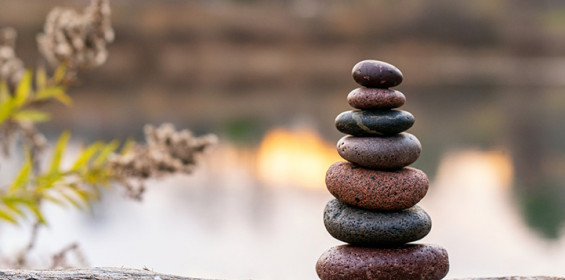By Elizabeth Herman | Posted: January 15, 2020
How do you keep your yoga mat clean? Many formulas exist online for using a combination of water, an astringent, and essential oils to rid your yoga mat of bacteria, sweat, grime, and other impurities.
To make your yoga practice pleasant and purifying every time, cleaning your mat regularly is a necessity. As Kyle Houseworth from Yoga Journal says, “Yoga mats absorb all the sweat, oil, and grime that they’re exposed to, which means they can become dirty, smelly, and even contaminated with germs quickly. To keep all that gunk off your mat, establishing a consistent cleaning routine is crucial.”
How to make your own mat cleansing spray
In different combinations, the ingredients that clean and smell pleasing can be brought together in water for a solution to spray onto your yoga mat, wipe with a towel or cloth, and allow to air dry. Which essential oils and cleaning agents to use depend upon your own preference and what you have available in the house.
Cleaning agents: Lemon juice, vinegar, witch hazel
Cleansing essential oils: Eucalyptus, tea tree
Aromatic essential oils: Lemongrass (inspiring), lavender (calming), mint (awakening)
One formula from Yoga with Adriene includes the following: ¾ cup distilled water, ¼ cup witch hazel, 5 drops tea tree essential oil, and 5 drops lemongrass essential oil. Her second formula includes the same amounts of water and witch hazel, along with 5 drops each of eucalyptus and lavender oils in place of the tea tree and lemongrass. Alternating the essential oils seems to give her the ability to vary and play with scents, all the while gaining similar cleaning and aesthetically pleasing effects.
Another very basic formula, from Houseworth’s article, includes distilled water and white vinegar in equal amounts, along with several drops of tea tree essential oil. If you want a cup of this solution, I would mix ½ cup each of the water and vinegar, and then add 10 drops of tea tree oil.
The Chopra Center’s Jennifer Avgerinos recomments a spray with the same amounts of distilled water and white vinegar, but encourages more variety in essential oils, suggesting 2-3 drops each of any number of “oils like eucalyptus, lemon, lavender, mint, or tea tree.”
Ready made cleaning products
The adventure of making your own yoga mat spray allows you to be flexible and find your own preferences. But if you’d rather buy a ready made product, the mat manufacturers have them available for online purchases.
Most of the sources I checked caution against using products with too much soap, such as baby wipes, because the suds can sometimes get stuck in the mat and foam up during your practice. That sounds like an awkward occurrence, especially if you take your mat to groups sessions or classes. Websites on the topic also recommend that you check with the manufacturer of your mat when deciding whether or not to place it in a washing machine and dryer, both of which seem to risk damaging both machines and mats. Manufacturers such as Manduka, Gaiam and Jo-Sha Yoga have cleaning products especially made for yoga mats that you might want to look into.
The personal ethic of cleanliness
Sensible advice seems worth taking, especially when it encourages one of yoga’s most important principles from Patanjali, the Yamas and Niyamas. The first personal ethic (Niyama) in classical yoga is about cleanliness and purity in body and mind. Known in Sanskrit as saucha, cleanliness helps to uplift the spirit from where we generally perceive it, inside the body. As Gurudev Sri Sri Ravi Shankar says, “By personal hygiene and cleanliness, the attachment to your physical body is lifted up. You become more aware of your inner body, inner self, the light that you are.”
Yoga is so much more than what happens on the yoga mat, but the way we treat our bodies and minds on the mat can have a profound effect on our lives. So making sure that we feel good about getting on the mat and practicing every day helps to ensure that we get and give the benefits of yoga to ourselves and those around us. As Sejal Shah states, “The practice of the Yamas and Niyamas definitely inspires us to remember that yoga is a way of life — not just something we do for 90 minutes three times a week on a rectangular mat.” In this way of life, purity and cleanliness becomes a way of honoring and respecting with gratitude the opportunity for personal, spiritual growth that we’ve received as human beings.
Although the habit of cleaning your mat makes up only one small part of yoga’s philosophical values surrounding cleanliness, I hope this information about options for cleaning your yoga mat helps to uplift your physical practice of yoga postures. For more information about deepening your practice, find a Sri Sri Yoga course near you, and enjoy taking care of your mat, your body, and your life!
Elizabeth Herman writes, offers writing support to clients, teaches, and volunteers for a better world. She has a PhD in Rhetoric, Composition and Literature. Find her on Facebook or Twitter.





























